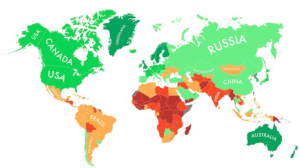I became very interested in “An Athabasca Story” mainly because I was confused on how Cariou wanted the last few paragraphs to be portrayed to the reader. I did a lot of research which I used for my close reading but I broke down almost every aspect of “An Athabasca Story” to be able to picture it better.
Cariou grew up in Saskatchewan and when he heard that his community and northern Alberta were under the threat of oil sands, he traveled to Alberta to create a documentary on the natives who have been dealing with these fears. While he was there, he spoke with an elder who told him some stores. Cariou said that his stories started to blend in with what he saw there(https://www.youtube.com/watch?v=xmZ-ej_Sx5Q). I viewed Elder Brother as a Native American who lived off the land in the forest. There was some discussion in class on whether he was human or not but it stated that he wore moccasins, had fingers and toes, and spoke English.
